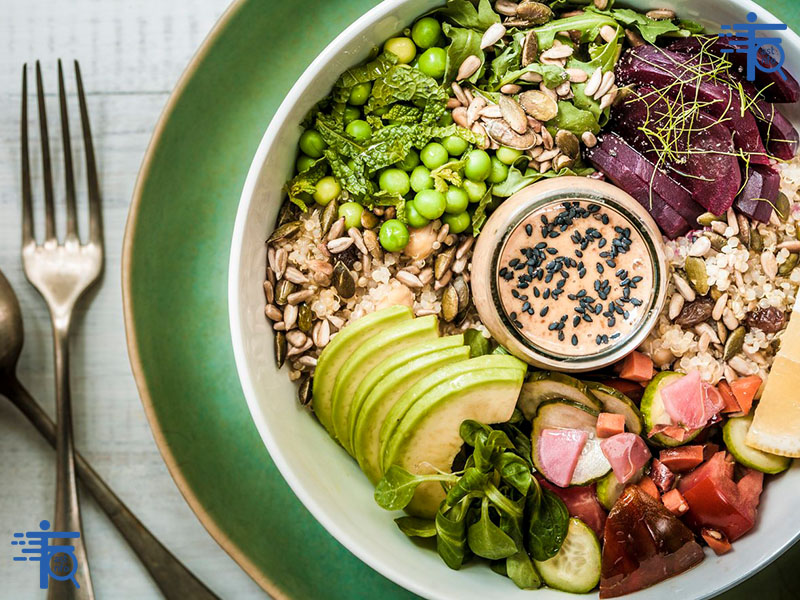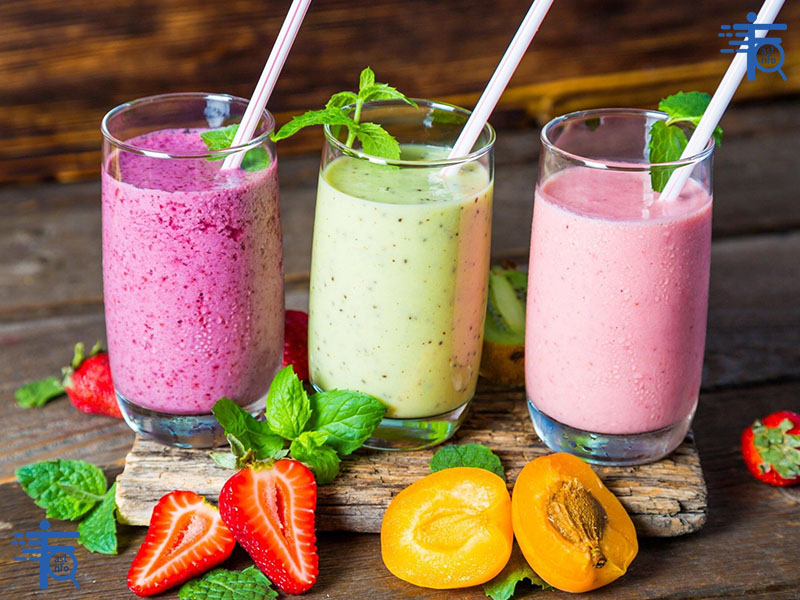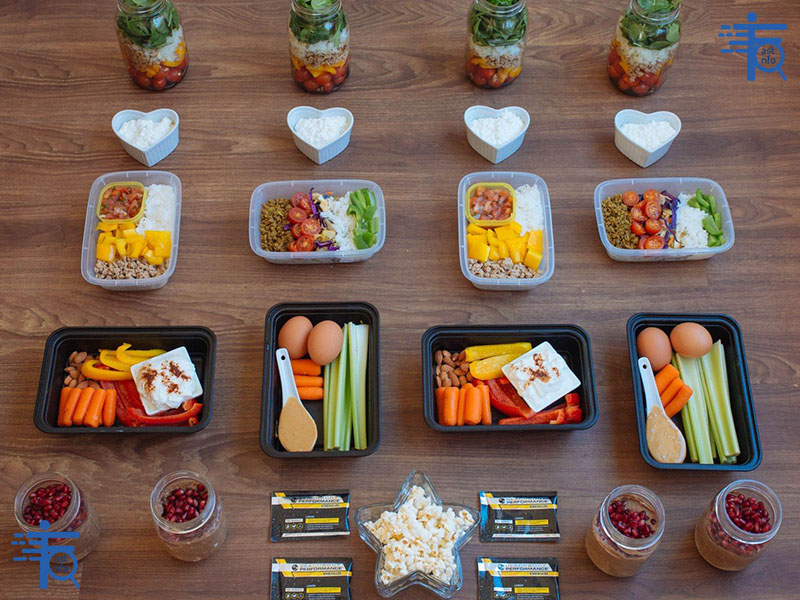How to Meal Prep for Weight Loss: Meal Ideas and Recipes
Meal prepping for weight loss can be an effective strategy to control portion sizes, ensure balanced nutrition, and avoid unhealthy food choices. Here’s a step-by-step guide to meal prepping for weight loss, along with meal ideas and recipes:
Step 1: Plan Your Meals
- Set a Calorie Goal: Determine your daily calorie needs based on your weight loss goals. Use a calorie calculator or consult a nutritionist.
- Focus on Macronutrients: Aim for a balance of protein, healthy fats, and complex carbs in each meal.
- Choose Whole Foods: Prioritize whole, unprocessed foods like lean proteins, vegetables, whole grains, and healthy fats.
- Portion Control: Use a food scale or measuring cups to ensure proper portion sizes.
Step 2: Grocery Shopping
- Protein: Chicken breast, turkey, lean beef, tofu, tempeh, eggs, Greek yogurt, fish (salmon, tuna, cod).
- Carbs: Quinoa, brown rice, sweet potatoes, oats, whole-grain bread, lentils, beans.
- Fats: Avocado, olive oil, nuts, seeds, nut butter.
- Vegetables: Spinach, broccoli, zucchini, bell peppers, carrots, kale, cauliflower.
- Fruits: Berries, apples, oranges, bananas (in moderation).
- Spices and Herbs: Garlic, ginger, turmeric, cumin, paprika, oregano, etc.
Step 3: Prep and Cook
- Batch Cooking: Cook large portions of staples like grains, proteins, and roasted veggies.
- Portion Meals: Divide meals into containers for easy grab-and-go options.
- Store Properly: Use airtight containers and refrigerate or freeze meals as needed.

Meal Ideas and Recipes
Breakfast Ideas
- Overnight Oats:
- ½ cup rolled oats, 1 cup unsweetened almond milk, 1 tbsp chia seeds, ½ cup berries, 1 tsp honey.
- Mix and refrigerate overnight.
- Veggie Egg Muffins:
- Whisk 6 eggs, add diced veggies (spinach, bell peppers, onions), and bake in a muffin tin at 350°F for 15-20 minutes.
- Greek Yogurt Parfait:
- 1 cup Greek yogurt, ½ cup granola, ½ cup mixed berries, 1 tbsp almond butter.
Lunch Ideas
- Grilled Chicken Salad:
- Grilled chicken breast, mixed greens, cherry tomatoes, cucumbers, avocado, and a light vinaigrette.
- Quinoa Bowl:
- Cooked quinoa, roasted veggies (broccoli, zucchini, carrots), grilled tofu or chicken, and a tahini dressing.
- Turkey Lettuce Wraps:
- Ground turkey cooked with garlic, ginger, and soy sauce, wrapped in lettuce leaves with shredded carrots and cucumber.
Dinner Ideas
- Baked Salmon with Veggies:
- Season salmon with lemon, garlic, and dill. Bake at 400°F for 12-15 minutes. Serve with roasted asparagus and quinoa.
- Stir-Fry:
- Sauté chicken or tofu with broccoli, bell peppers, snap peas, and a low-sodium soy sauce. Serve over cauliflower rice.
- Lentil Soup:
- Cook lentils with diced tomatoes, carrots, celery, onions, garlic, and vegetable broth. Season with cumin and paprika.
Snack Ideas
- Hard-Boiled Eggs
- Apple Slices with Almond Butter
- Hummus with Veggie Sticks
- Mixed Nuts (1 oz portion)
- Protein Smoothie: Blend 1 scoop protein powder, 1 cup unsweetened almond milk, ½ banana, and 1 tbsp peanut butter.

Tips for Success
- Stay Consistent: Prep meals for the week on Sundays or another convenient day.
- Keep It Simple: Stick to recipes with minimal ingredients to save time.
- Hydrate: Drink plenty of water throughout the day.
- Track Progress: Use a food diary or app to monitor your intake and progress.
By planning ahead and focusing on nutrient-dense, portion-controlled meals, you can make weight loss more manageable and sustainable.
What does a weight-loss-friendly diet look like?
A weight-loss-friendly diet focuses on creating a calorie deficit while providing your body with the nutrients it needs to function optimally. It emphasizes whole, minimally processed foods, balanced macronutrients, and portion control. Here’s what a weight-loss-friendly diet looks like:
Key Principles of a Weight-Loss-Friendly Diet
- Calorie Deficit: Consume fewer calories than you burn. Use a calorie calculator to determine your daily needs and aim for a moderate deficit (typically 500-750 calories per day for safe weight loss).
- Balanced Macronutrients:
- Protein: Helps preserve muscle mass and keeps you full (e.g., lean meats, fish, eggs, tofu, legumes).
- Healthy Fats: Supports satiety and hormone health (e.g., avocado, nuts, seeds, olive oil).
- Complex Carbs: Provides sustained energy (e.g., whole grains, vegetables, fruits).
- High in Fiber: Promotes fullness and supports digestion (e.g., vegetables, fruits, legumes, whole grains).
- Low in Added Sugars and Processed Foods: Minimize sugary snacks, sodas, and highly processed foods.
- Hydration: Drink plenty of water to support metabolism and reduce hunger.

Foods to Include
Protein
- Chicken breast, turkey, lean beef, pork tenderloin.
- Fish (salmon, tuna, cod) and seafood.
- Eggs and egg whites.
- Plant-based proteins: tofu, tempeh, edamame, lentils, chickpeas, black beans.
- Low-fat dairy: Greek yogurt, cottage cheese, skim milk.
Healthy Fats
- Avocado.
- Nuts and seeds (almonds, walnuts, chia seeds, flaxseeds).
- Nut butters (peanut butter, almond butter).
- Olive oil, avocado oil, coconut oil (in moderation).
Complex Carbohydrates
- Whole grains: quinoa, brown rice, oats, whole-grain bread, barley.
- Starchy vegetables: sweet potatoes, butternut squash, corn.
- Legumes: lentils, black beans, chickpeas.
- Fruits: berries, apples, oranges, bananas (in moderation).
Non-Starchy Vegetables
- Leafy greens: spinach, kale, arugula.
- Cruciferous veggies: broccoli, cauliflower, Brussels sprouts.
- Other veggies: zucchini, bell peppers, cucumbers, carrots, tomatoes.
Beverages
- Water (plain or infused with lemon/cucumber).
- Herbal teas.
- Black coffee (in moderation).
Foods to Limit or Avoid
- Sugary drinks: soda, energy drinks, sweetened teas.
- Processed snacks: chips, cookies, candy.
- Refined carbs: white bread, pastries, sugary cereals.
- Fried foods: French fries, fried chicken, doughnuts.
- High-calorie condiments: creamy dressings, mayonnaise, sugary sauces.
Sample Daily Meal Plan
Breakfast
- Option 1: Greek yogurt with berries, chia seeds, and a drizzle of honey.
- Option 2: Veggie omelet (2 eggs, spinach, tomatoes) with a slice of whole-grain toast.
Snack
- Option 1: Apple slices with 1 tbsp almond butter.
- Option 2: Carrot sticks with hummus.
Lunch
- Option 1: Grilled chicken salad with mixed greens, cherry tomatoes, cucumbers, and a light vinaigrette.
- Option 2: Quinoa bowl with roasted veggies, chickpeas, and tahini dressing.
Snack
- Option 1: Hard-boiled eggs.
- Option 2: A small handful of mixed nuts.
Dinner
- Option 1: Baked salmon with steamed broccoli and quinoa.
- Option 2: Stir-fry with tofu, bell peppers, snap peas, and cauliflower rice.
Dessert (Optional)
- Option 1: A square of dark chocolate (70% or higher).
- Option 2: A small bowl of mixed berries.

Tips for Success
- Portion Control: Use smaller plates, measure servings, and avoid eating straight from the package.
- Mindful Eating: Eat slowly, savor your food, and listen to your hunger cues.
- Meal Prep: Plan and prepare meals in advance to avoid unhealthy choices.
- Stay Active: Combine your diet with regular exercise for optimal results.
- Track Progress: Use a food diary or app to monitor your intake and stay accountable.
A weight-loss-friendly diet doesn’t have to be restrictive or boring. By focusing on nutrient-dense, satisfying foods and making sustainable lifestyle changes, you can achieve your weight-loss goals while feeling energized and healthy.











No comment